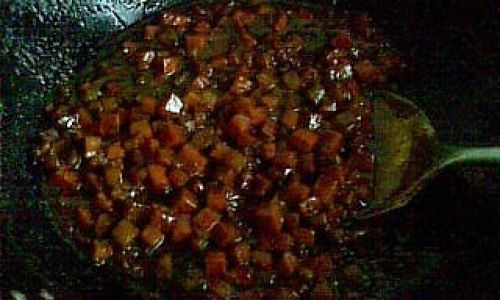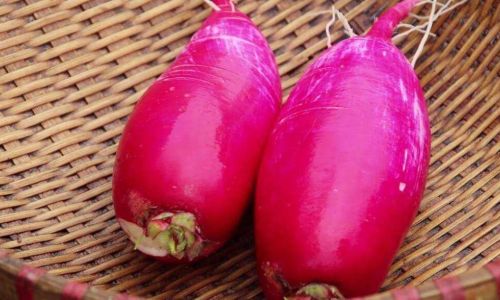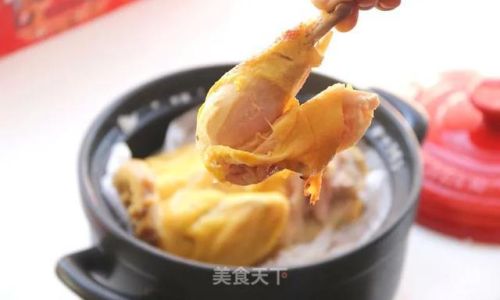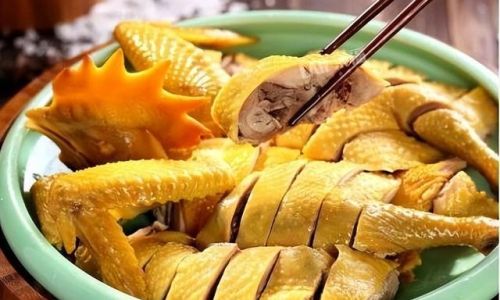Introduction

In the vast culinary landscape of China, regional cuisines offer a myriad of flavors and techniques that have captivated food enthusiasts worldwide. Among these, Sichuan cuisine stands out for its bold, spicy, and umami-rich dishes. One such iconic ingredient that forms the backbone of many Sichuan delicacies is doubanjiang, or fermented chili bean paste. This condiment, made from chili peppers, salted soybeans, flour, and various spices, adds a complex layer of flavor to dishes, ranging from stir-fries to braises. Today, we will explore how to create a delightful fried sauce gravy, or zhajiang lu, using doubanjiang as its foundation. Zhajiang lu is traditionally associated with Beijing cuisine, but by incorporating doubanjiang, we infuse it with a unique Sichuan twist, blending the hearty, savory notes of the north with the fiery, aromatic essence of the south.
Understanding Doubanjiang
Before diving into the recipe, it’s crucial to understand what doubanjiang brings to the table. This fermented paste is a staple in Sichuan kitchens, where it’s used to enhance the taste of numerous dishes. The fermentation process gives doubanjiang its deep, earthy flavor, while the chili peppers provide heat and a vibrant red hue. The addition of salted soybeans adds a nutty, savory element, and the spices like Sichuan peppercorns introduce a subtle floral and slightly numbing sensation.
When selecting doubanjiang for this recipe, look for a high-quality brand that balances heat, umami, and aroma. Different brands can vary widely in taste, so it might be worth experimenting to find one that suits your palate.
Preparing the Ingredients
Before starting the cooking process, gather all the necessary ingredients. Here’s a comprehensive list:
- Doubanjiang: 4 tablespoons
- Pork mince: 500 grams (ground pork)
- Soy sauce: 3 tablespoons
- Oyster sauce: 2 tablespoons (optional, for added umami)
- Sugar: 1 tablespoon (adjust to taste)
- Shaoxing wine or dry sherry: 2 tablespoons (for depth of flavor)
- Water: 1 cup (or more, as needed)
- Cornstarch slurry: Made by mixing 2 tablespoons of cornstarch with 2 tablespoons of water (for thickening)
- Garlic: 4 cloves, finely chopped
- Ginger: 1 tablespoon, finely chopped
- Scallions: 2, finely chopped (for garnish)
- Vegetable oil: As needed for frying
- Sesame oil: 1 teaspoon (for aroma)
- Optional additions: Diced tofu, blanched vegetables, or noodles to serve with the gravy
Step-by-Step Recipe
Preparing the Aromatics
Begin by preparing the aromatics. Finely chop the garlic and ginger. These will form the base of the sauce, providing a fragrant and slightly sweet background flavor. Set them aside until needed.
Cooking the Pork Mince
In a large wok or heavy-bottomed pan, heat a generous amount of vegetable oil over medium-high heat. Once the oil is hot, add the pork mince, breaking it up with a wooden spoon or spatula as it cooks. Cook the pork until it’s browned all over, about 5-7 minutes. This step is crucial for developing the meaty, savory notes of the gravy.
Adding the Aromatics and Doubanjiang
Push the pork mince to one side of the wok and add a little more oil if needed. Add the chopped garlic and ginger to the empty space, allowing them to sizzle and release their flavors. Stir the aromatics into the pork mince, then add the doubanjiang. Stir well to coat the pork evenly with the spicy, fragrant paste. Cook for another 2-3 minutes, letting the doubanjiang’s flavors meld with the pork.
Seasoning the Gravy
Pour in the Shaoxing wine or dry sherry, stirring constantly to deglaze the wok and incorporate the alcohol’s subtle sweetness and depth. Add the soy sauce and oyster sauce (if using), followed by the sugar. Stir well to combine all the flavors. Taste the mixture and adjust the seasoning as needed, adding more soy sauce for saltiness or sugar for sweetness.

Simmering to Develop Flavor
Pour in the water, stirring to combine all the ingredients into a loose sauce. Bring the mixture to a gentle simmer, then reduce the heat to low. Let the gravy simmer for about 20-30 minutes, stirring occasionally to prevent sticking. This slow cooking process allows the flavors to deepen and meld together, creating a rich, complex sauce.
Thickening the Gravy
After the gravy has simmered for the required time, check its consistency. It should be thick enough to coat the back of a spoon but still pourable. If it’s too thin, mix the cornstarch slurry and gradually add it to the gravy, stirring constantly to avoid lumps. Continue to simmer until the desired thickness is achieved. If the gravy becomes too thick, add a little more water and stir well.
Finishing Touches
Remove the gravy from heat and stir in the sesame oil. The sesame oil will add a delightful aroma and a subtle nutty flavor. Allow the gravy to cool slightly before serving.
Garnishing and Serving
To serve, ladle the zhajiang lu over cooked noodles, rice, or even tofu and blanched vegetables. Garnish with finely chopped scallions for a burst of freshness and color. Optionally, you can also sprinkle with a pinch of Sichuan peppercorns or toasted sesame seeds for added texture and flavor.
Serving Suggestions
- Noodles: Serve the zhajiang lu with thick, chewy noodles like udon or soba for a hearty meal.
- Rice: Pair it with steamed jasmine or basmati rice for a more traditional Chinese experience.
- Tofu and Vegetables: For a vegetarian option, serve the gravy over silken tofu or a bed of blanched vegetables like broccoli, bell peppers, or snap peas.
Storage
Leftover zhajiang lu can be stored in an airtight container in the refrigerator for up to a week. Reheat gently before serving, adding a splash of water if the gravy has thickened too much.
Conclusion
By incorporating doubanjiang into a traditional zhajiang lu recipe, we’ve created a dish that bridges the gap between Sichuan’s fiery spirit and Beijing’s hearty comfort. This fried sauce gravy is not just a meal; it’s a culinary journey that takes you through layers of flavors, from the initial burst of chili heat to the lingering sweetness of sugar and soy. Whether you’re a seasoned chef or a home cook eager to explore new flavors, this recipe promises to deliver a memorable dining experience. So, gather your ingredients, fire up the wok, and embark on a culinary adventure that celebrates the rich tapestry of Chinese cuisine. Bon appétit!






0 comments